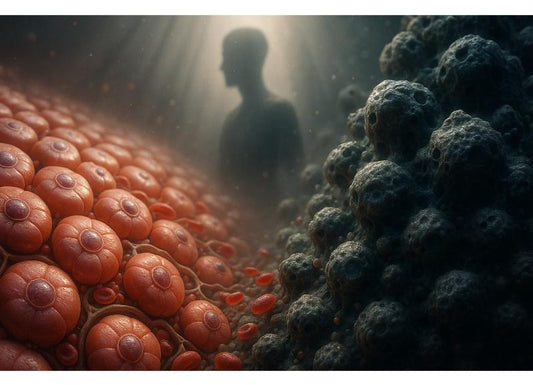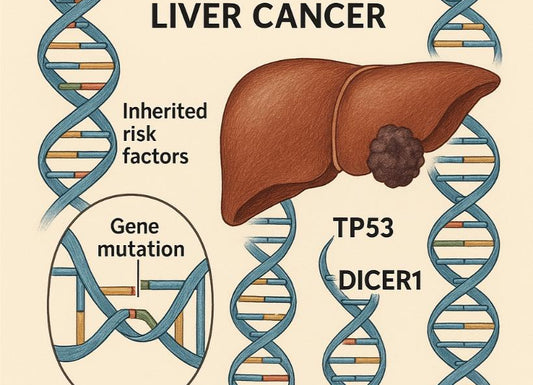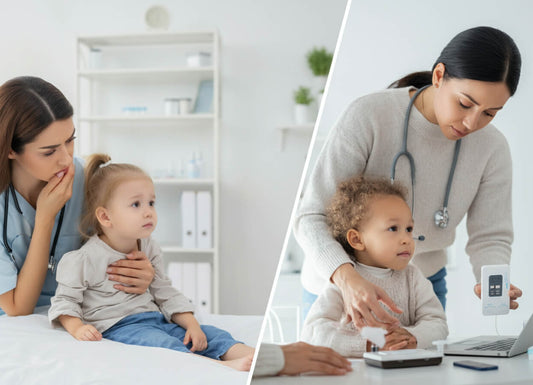What Are the Kidney Cyst Symptoms in Females?
 Written By
Jaclyn P. Leyson-Azuela, RMT, MD, MPH
Written By
Jaclyn P. Leyson-Azuela, RMT, MD, MPH

Kidney cysts are fluid-filled sacs that form inside or on your kidneys. Many cysts are harmless, but there are those that can cause pain, infection, or changes in urination. Knowing the kidney cyst symptoms in females helps you recognize when to seek medical care or use at-home urine test strips to check your kidney health.
This condition is common, particularly among aging women. Paying attention to symptoms like back pain, urinary changes, or blood in urine helps catch problems early. Simple lifestyle choices, regular imaging, and even at-home monitoring can protect your kidneys and prevent any complications.
Key Insights
-
Pain in the side, fever, or blood in urine can indicate a kidney cyst issue
-
Women often experience cyst pain differently than men
-
Large cysts or infections require medical attention
-
At-home urine strips help detect early warning signs
-
Regular follow-ups and healthy habits protect kidney function
How Do Kidney Cysts Present Differently in Women?
Kidney cysts in women can appear in different ways than in men because of hormonal factors, urinary anatomy, and changes that often come with age. You may notice pain, urinary symptoms, or fatigue that feels different from other kidney issues.
Hormonal and Anatomical Factors That Affect Women
-
Women often develop simple kidney cysts that remain small and symptom-free.
-
Hormonal changes during menopause or pregnancy can increase fluid retention, which may enlarge cysts or make them painful
-
The female anatomy places the kidneys closer to the lower ribs and upper abdomen, so cyst pressure can cause abdominopelvic pain instead of side pain
-
Women over 50 show higher rates of complex cysts with thicker walls, sometimes linked to infection or bleeding
Differences in Pain and Urinary Changes

Pain from a kidney cyst in females may feel dull, sharp, or pressure-like. It often occurs on one side of the back or below the ribs. In some cases, pain radiates toward the lower abdomen or groin.
You may also notice the following:
-
Increased urinary frequency or urgency
-
Dark or cloudy urine
-
Traces of blood in urine (hematuria)
-
Pain that worsens when bending, stretching, or after long sitting
How Female Cysts Compare to Male Cases
Data shows men often have simple renal cysts. But women more frequently report discomfort from smaller cysts. Hormonal cycles can also influence how kidney pain feels.
-
Female cysts may cause discomfort that mimics urinary tract infection (UTI) symptoms
-
Back pain in women is often misattributed to muscle strain, delaying diagnosis
-
Routine ultrasound scans during gynecologic exams sometimes detect cysts incidentally
What This Means for You
If you’re a woman and you feel dull pain in your lower back or notice changes in urination, consider asking your healthcare provider about a kidney ultrasound or using at-home urine strips to check for blood, protein, or signs of infection.
What Are the Most Common Signs and Symptoms of a Kidney Cyst?
Kidney cyst symptoms in women can range from mild to severe. Many are silent until a cyst becomes large, infected, or ruptures. When symptoms appear, they usually involve pain, urinary changes, or fever.
Typical Signs to Watch For
-
Dull or sharp pain on one side of your back, below your ribs
-
Frequent urination or urgency
-
Blood in urine (hematuria)
-
Dark or cloudy urine
-
Fever or chills, suggesting infection
-
Fullness or bloating in the upper abdomen
-
High blood pressure, especially if cysts affect both kidneys
Understanding Each Symptom
Pain in the back or side
Pain occurs when the cyst stretches the kidney capsule or presses nearby tissues. It’s usually felt on one side and may increase with movement or deep breathing.
Urinary changes
Cysts can block urine flow or irritate surrounding tissues. This can cause frequent urination, a sense of incomplete emptying, or burning during urination if infection is present.
Blood in urine
Even a small amount of blood can signal a ruptured cyst or an infection. You may notice pink, red, or brown urine. At-home urine test strips can detect blood early, even when it isn’t visible.
Fever and chills
These appear when a cyst becomes infected, leading to an infected kidney cyst or abscess. This needs urgent care, often with antibiotics.
Abdominal bloating or fullness
Large cysts (more than 5 cm) can press on nearby tissues, which causes discomfort, nausea, or a feeling of pressure after eating.
Symptom Severity and Cyst Size

|
Cyst Size |
Typical Symptoms |
When to Be Concerned |
|
<2 cm |
Usually no symptoms |
None |
|
2–5 cm |
Mild back pain, urinary changes |
Monitor and test urine |
|
5–10 cm |
Pain, fullness, possible infection |
See a doctor |
|
>10 cm |
Sharp pain, fever, possible rupture |
Emergency evaluation |
When Symptoms Mimic Other Conditions
Many women confuse kidney cyst pain with muscle strain, UTI, or ovarian issues. If your urine looks different or you feel deep, one-sided pain that doesn’t improve, consider checking your urine with a home test strip and undergoing an imaging test.
How Can You Tell If a Kidney Cyst Is Causing Pain or Complications?
Kidney cysts become painful when they bleed, grow large, or get infected. Sudden pain, fever, or visible blood in urine are common warning signs.
Warning Signs That a Cyst Is Infected or Bleeding
-
Sharp or stabbing pain in the flank or upper abdomen
-
Fever, chills, or fatigue
-
Blood in urine (hematuria)
-
Cloudy or foul-smelling urine
-
Pain that radiates to the lower abdomen or groin
-
Nausea or vomiting
-
Drop in urine output or swelling in the legs
These symptoms point to possible complications such as:
-
Infected cysts (abscess)
-
Ruptured cyst, causing internal bleeding
-
Obstructed urinary tract, leading to pain and swelling
-
Hypertension from pressure on kidney vessels
Identifying Infection vs. Simple Pain
-
If you have pain with fever and chills, infection is likely
-
If pain comes without fever but with blood in urine, bleeding is possible
-
Mild discomfort that improves with rest may come from cyst pressure, not infection
Imaging and Diagnostic Tools
Doctors often confirm the diagnosis through:
-
Ultrasound: Offers a quick, radiation-free imaging to check cyst size and shape
-
CT scan: Used to evaluate complex cysts or bleeding
-
MRI: Helpful for determining if a mass is solid or fluid-filled
-
At-home urine test: Can show early blood or infection markers, signaling the need for further tests
Complication Chart
|
Complication |
Typical Symptoms |
Urgent Action |
|
Infection |
Fever, chills, pain, cloudy urine |
See a doctor immediately |
|
Rupture |
Sudden sharp pain, blood in urine |
Emergency care |
|
Hypertension |
Headache, fatigue |
Monitor and treat |
|
Kidney function drop |
Swelling, nausea, reduced urination |
Medical evaluation |
Self-Monitoring Between Appointments
If you’re monitoring a cyst at home:
-
Check your urine weekly with at-home urine test strips for signs of blood or infection
-
Record your pain pattern and hydration habits
-
Seek medical care if pain worsens, fever appears, or you see blood in urine
When Should You See a Doctor About Kidney Cyst Symptoms?

You should see a healthcare provider if your pain doesn’t improve, your urine changes in color, or you have fever. Some cysts stay harmless for years, but others grow or rupture.
Red Flags That Need Medical Care
-
Persistent pain in your lower back or side
-
Blood or dark discoloration in your urine
-
Fever, chills, or general weakness
-
Swelling in your legs or abdomen
-
Frequent urination or painful urination
-
History of polycystic kidney disease (PKD) in your family
Age and Risk Factors for Women
About 5.8% of women over the age 50 are more likely to develop simple kidney cysts, but the risk increases in men. There are other factors that influence the development of renal cysts, including:
-
Gender (predominantly male)
-
Serum creatinine
-
Smoking
What to Expect at the Clinic
Your doctor may recommend:
-
Urinalysis to look for hematuria or infection markers
-
Blood tests to check kidney function (creatinine, estimated glomerular filtration rate; eGFR)
-
Ultrasound or CT scan for cyst size and number
-
Monitoring plan for cysts smaller than 5 cm
-
Surgery or drainage if cysts cause persistent pain or infection
When to Seek Emergency Care
It is advisable to go to the emergency department if you have the following:
-
Sudden, severe pain
-
High fever of more than 101°F
-
Visible blood in urine
-
Nausea and vomiting
-
Rapid heartbeat or dizziness
Ignoring these can risk rupture, infection, or kidney damage. If you have access, use an at-home urine test strip to check for blood or protein while waiting for your appointment.
Can At-Home Urine Test Strips Detect Problems Linked to Kidney Cysts?
Yes, at-home test strips can show early warning signs such as blood, protein, or infection that may point to kidney issues. While they can’t diagnose cysts directly, they help monitor kidney health between visits.
What Urine Test Strips Can Show
-
Blood in urine (hematuria): May signal cyst rupture or bleeding.
-
Protein: Suggests kidney stress or early chronic kidney disease.
-
Leukocytes or nitrites: Indicate infection, possibly from an infected kidney cyst.
-
Specific gravity: Helps assess hydration levels.
How to Use At-Home Strips
-
Collect a midstream urine sample in a clean cup
-
Dip the strip for the time shown on the package (usually 2–3 seconds)
-
Wait for color changes to appear
-
Compare to the chart provided with your kit (in some cases it includes a subscription-based smartphone app, where it automatically scans the strip and have your results ready)
-
Record your results and trends overtime using a journal or phone app

Benefits of Using Test Strips
-
Early detection of blood or infection
-
Affordable, non-invasive, quick results
-
Easy monitoring for women with a cyst history
-
Complements doctor follow-ups or imaging
Limitations
-
Cannot confirm cyst presence or type
-
May give false positives if used during menstruation or dehydration
-
Results need confirmation through lab tests or ultrasound
When to Use At-Home Testing
Use these at-home test strips if you:
-
Feel pain or pressure in your back
-
Notice cloudy or dark urine
-
Have a history of kidney cysts
-
Want to track recovery after treatment
Using these tools helps you stay proactive about your health. If results show blood, protein, or infection markers, contact your doctor for a follow-up test.
How to Monitor and Manage Kidney Cysts at Home
Monitoring your kidneys helps prevent complications. Lifestyle changes and regular checks can make a difference in cyst growth and discomfort.
Lifestyle and Preventive Habits
-
Stay hydrated by drinking enough water to keep urine clear.
-
Avoid excessive salt and processed foods that raise blood pressure.
-
Keep blood pressure under control with diet or medication.
-
Exercise gently and avoid activities that strain your back.
-
Limit painkillers like NSAIDs that can stress the kidneys.
Medical Monitoring
Your doctor may recommend:
-
Ultrasound scans every 6–12 months for cyst tracking.
-
Blood pressure checks and blood tests for kidney function.
-
Urine testing, either at home or in the lab, to spot issues early.
When Cysts Need Treatment
Most cysts don’t need treatment, but intervention may be needed if:
-
Pain becomes constant or severe.
-
The cyst is larger than 5–7 cm.
-
There’s infection or bleeding.
-
Kidney function drops.
Treatment options include draining the cyst, laparoscopic removal, or managing complications like infection or hypertension.
Related Resources
What Size of Kidney Cyst Is Dangerous? How to Know When to Take Action
Should You Worry About a Cyst on Your Kidney?
Quick Summary Box
-
Most kidney cysts in women are benign and painless.
-
Pain, urinary changes, or blood in urine may indicate a complication.
-
Infections and ruptures require prompt medical care.
-
At-home urine test strips can detect early blood or infection signs.
-
Regular imaging and follow-ups keep cysts under control.
References
Chang, C.-C., Kuo, J.-Y., Chan, W.-L., Chen, K.-K., & Chang, L. (2007). Prevalence and Clinical Characteristics of Simple Renal Cyst. Journal of the Chinese Medical Association, 70(11), 486–491. https://doi.org/10.1016/S1726-4901(08)70046-7
Garfield, K., & Leslie, S. W. (2020). Simple Renal Cyst. PubMed; StatPearls Publishing. https://www.ncbi.nlm.nih.gov/books/NBK499900/
Khalid, A., Kabir Babajide Yakubu, Umar, A. M., Bashir Garba Aljannare, Nasiru Ahmad Aminu, Olusegun George Obadele, & Abdullahi Abdulwahab-Ahmed. (2025). Uncommon presentation and management of a giant renal cyst abscess: A case report. World Journal of Nephrology, 14(3). https://doi.org/10.5527/wjn.v14.i3.108703
Kidney Cysts. (n.d.). National Kidney Federation. https://www.kidney.org.uk/kidney-cysts
Kim, S.-M., Chung, T.-H., Oh, M.-S., Kwon, S.-G., & Bae, S.-J. (2014). Relationship of Simple Renal Cyst to Hypertension. Korean Journal of Family Medicine, 35(5), 237–242. https://doi.org/10.4082/kjfm.2014.35.5.237
National Institute of Diabetes and Digestive and Kidney Diseases. (2020, January 15). Simple Kidney Cysts | NIDDK. National Institute of Diabetes and Digestive and Kidney Diseases. https://www.niddk.nih.gov/health-information/kidney-disease/simple-kidney-cysts
Terada, N., Arai, Y., Kinukawa, N., Yoshimura, K., & Terai, A. (2004). Risk factors for renal cysts. BJU International, 93(9), 1300–1302. https://doi.org/10.1111/j.1464-410X.2004.04844.x

Jaclyn P. Leyson-Azuela, RMT, MD, MPH, is a licensed General Practitioner and Public Health Expert. She currently serves as a physician in private practice, combining clinical care with her passion for preventive health and community wellness.



